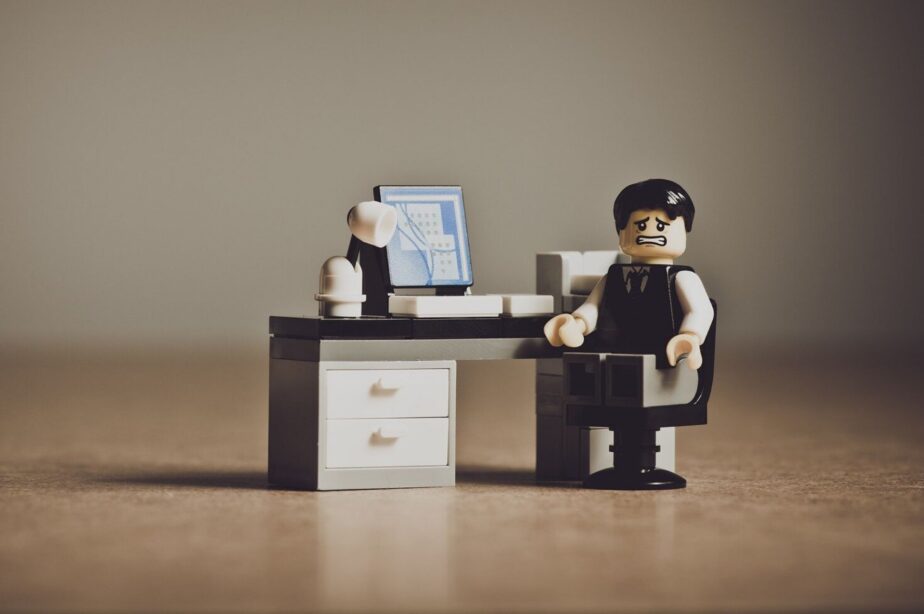
(Originally posted April 2020, updated January 2023)
Some might still enjoy getting a monthly newsletter with subject lines that say, “June newsletter: X company update.” But I doubt there are many. The word ‘newsletter’ has become dated for most people, conjuring up thoughts of wordy, jargon-filled articles created to give the company a huge pat on the back.
But it doesn’t have to be that way.
During the lockdown, newsletters were a great way to keep the lines of communication open between businesses and customers, helping them be in a position to hit the ground running when things eventually return to normal. Newsletters enabled businesses to continue offering advice, providing business updates, and promoting future products or services.
Newsletter tips
For a long time, newsletters have been a popular way for businesses to communicate with current and potential customers. Whether in the form of a traditional paper newsletter that gets posted through your letterbox or e-newsletters that fill up your inbox. But if you want your customers to actually read your newsletters and not simply mark them as junk, you need to give them something to look forward to. That’s why it’s so important to get the style and content right, especially in the era of GDPR, when people must choose to opt-in to receive your newsletters.

Know the purpose of your newsletter
Before you start putting together content, make sure you are clear on what are the goals for your newsletter. Who will you be sending your newsletter to, and what do you hope to achieve? Having a clear goal in mind will dictate the style and content of the newsletter. So, if you want to boost sales, then send irresistible promotions. If you want to establish your business as an expert in your field, then send quality articles.
Create catchy headlines and keep them punchy
Always use catchy headlines and subject lines to grab the reader and make them want to open your email and read your newsletter straight away. Your customers are busy people, and won’t want to read reams of text, so keep the content simple and short. Remember that your email aims to build relationships. Get people to your website with a little teaser using a ‘read more’ link to your website.
Style and tone
Think about your tone of voice, is it right for your audience? Try to keep it warm and friendly if that’s appropriate, while still sounding professional. If your newsletter software lets you, consider greeting your readers by using their first names. Also try to keep sentences short, about 20 words or less is ideal and avoid passive voice as much as possible.
Write content that’s worth reading
It may sound obvious but newsletters are to communicate news. Therefore, you must make sure that the news you share will be valuable to your readers. Don’t just use it to promote yourself and plug adverts. Give your readers tips, advice and information that’s useful to them, timely and relevant. If you are sending out newsletters during something like a pandemic think about people’s concerns and priorities right now and what may change for them when out of lockdown.
Don’t aggressively sell
Yes, you will want to raise your profile and boost your brand, but people don’t want to receive a barrage of sales material. If people feel that you are pushing your product or service too hard (especially when they may have other priorities) they will simply hit unsubscribe. Aim for less than 10% promotion in your newsletters. That’s more than enough space to get your message across.
Style and tone
Think about your tone of voice; is it right for your audience? Try to keep it warm and friendly, if that’s appropriate, while still sounding professional. If your newsletter software lets you, consider greeting your readers by using their first names. Also, try to keep sentences short; about 20 words or less is ideal and avoid passive voice as much as possible.
Write content that’s worth reading
Newsletters are to communicate news. Therefore, you must make sure that the news you share will be valuable to your readers. Don’t just use it to promote yourself and plug adverts. Give your readers tips, advice and information that’s useful to them, timely and relevant. If you are sending out newsletters during something like a pandemic, think about people’s concerns and priorities right now and what may change for them when out of lockdown.
Don’t aggressively sell
Yes, you will want to raise your profile and boost your brand, but people don’t want to receive a barrage of sales material. If people feel that you are pushing your product or service too hard (especially when they may have other priorities), they will hit unsubscribe. Aim for less than 10% promotion in your newsletters. That’s more than enough space to get your message across.
Share positive news and advice
Some of your customers will likely be feeling very anxious at the moment. To show that you support and understand their concerns, be a positive presence for them. Help to offset the stress of being in lockdown and the worrying and upsetting news stories in the media.
Keep it regular
If people don’t receive your newsletters regularly, then why should they bother to keep reading them? Your email will likely slide to the bottom of their reading list (if not deleted straight away). You need to find a good rhythm that’s not so frequent that you struggle with coming up with content, but your readers aren’t waiting long for the next edition.
Know when to send
Timing can often be crucial. Do some research to find out when is the best time to send it. If you send your newsletter out at any random time, it could easily sit in people’s inboxes and never be opened. Experiment by sending at different times to see what response you get.

Share positive news and advice
Some of your customers will likely be feeling very anxious at the moment. To show that you support and understand their concerns, be a positive presence for them. Help to offset the stress of being in lockdown and the worrying and upsetting news stories in the media.
Keep it regular
If people don’t receive your newsletters regularly, then why should they bother to keep reading them? Your email will likely slide to the bottom of their reading list (if not deleted straight away). You need to find a good rhythm that’s not so frequent that you struggle with coming up with content, but your readers aren’t waiting long for the next edition.
Know when to send
Timing can often be crucial. Do some research to find out when is the best time to send it. If you send your newsletter out at any random time, it could easily sit in people’s inboxes and never be opened. Experiment by sending at different times to see what response you get.

Don’t forget (or worse, ignore) GDPR
GDPR (General Data Protection Regulation) was introduced in 2018 and has changed the way businesses handle personal data. People must now give you their consent for you to use their data. This includes agreeing for you to send newsletters to them, and you will have evidence that you have their permission. This covers all existing subscribers on your email list.
Look for inspiration
If you are facing a blank page and need more inspiration, take a look at what your competitors do. See what you think works and doesn’t work. If there are companies that really inspire you, then look at what they send out. You could also ask your customers what they’d like to read about. Put the question out to your followers on Facebook or set up a poll on Twitter.
If you are still looking for the time to create relevant and engaging content, then a freelance copywriter (like me!) can help. Get in touch, and we can chat about your newsletter needs!